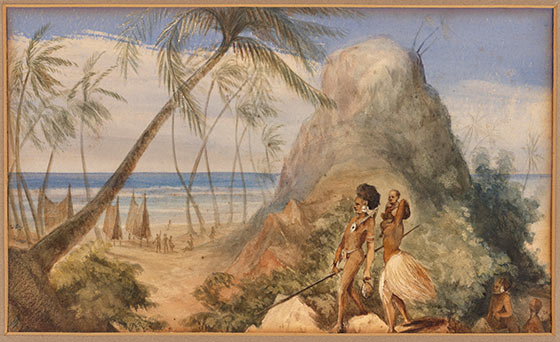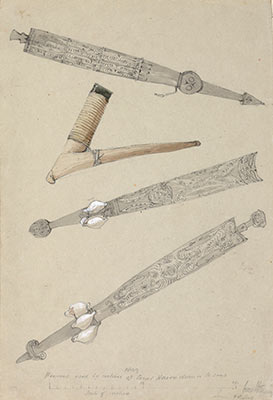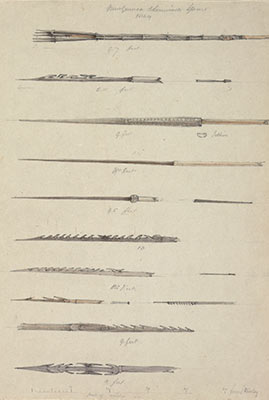The HMS Rattlesnake Journey to Papua New Guinea 1849
The Rattlesnake voyage
Some of the earliest depictions of Papua New Guinea are from the journey of the HMS Rattlesnake surveying Australia’s Great Barrier Reef and New Guinea.
The marine Hydrographers of the British Admiralty wanted to chart a safe passage through the Great Barrier Reef and the gap between the northern tip of Australia and Papua New Guinea, which would open up the new colony to the East Indies trade.
They commissioned the Rattlesnake, a 28 gun frigate of the Royal Navy, whose captain was a keen amateur artist and whose name, Owen Stanley, was given to the mountain ranges of PNG.
Both geography and science were important on these voyages and like Captain Cook voyage's experts in these fields were amongst the passengers and crew.
Captain Owen Stanley and the Rattlesnake were comissioned to chart the shoals of the Barrier Reef and create the first detailed charts of the coast of New Guinea. Stanley was a physical scientist and member of the Royal Geographical and Astronomical societies. In December 1846 he set sail on the 28 gun ship the Rattlesnake, with a naturalist John MacGillivray and Thomas Henry Huxley, as assistant surgeon and naturalist.
Marine artist, Oswald Brierly joined the expidition and together with Stanley they made two voyages through the Great Barrier Reef, painting and sketching throughout.
On the last part of its journey, the Rattlesnake went to the Louisiade Archipelago and the coast of New Guinea in May 1849.
Album of sketches compiled by naval officer, Owen Stanley, whilst in command of the surveying ship, H.M.S. Rattlesnake. Stanley died suddenly in 1850 from an illness contracted while surveying the Louisiade Archipelago.
This image viewer requires a web browser with the Flash plugin and JavaScript enabled.
Get the latest Flash player .
These illustrations from the H.M.S. Rattlesnake show some of the earliest illustrations of the PNG places, people and tools, weapons and transport.
Brierly and Stanley produced the first significant visual record of 19th century contact between Europeans and the indigenous people of Northern Australia and New Guinea. The Mitchell Library holds hundreds of images from the Rattlesnakes' voyages. A selection is above.


